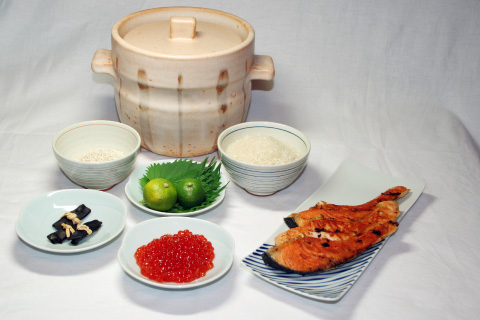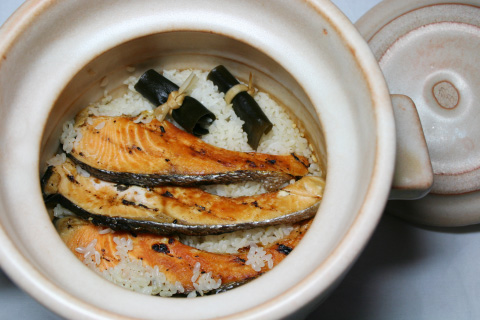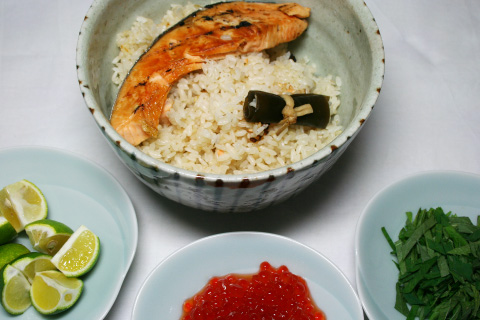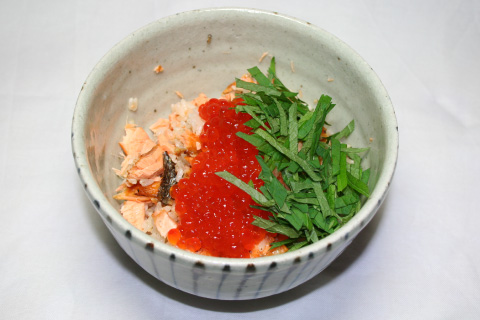The recipe I referred to
kyotofoodie.com/home-cooking-shake-gohan-salmon-rice/
home cooking: Shake Gohan (Salmon Rice)
November 20th, 2007 by
Kyoto Foodie
home cooking: Shake Gohan (Salmon Rice) 鮭ご飯
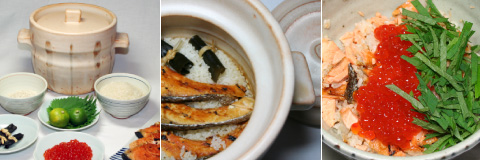
This is a dish that is truly delicious beyond mere words.
If there is no
shake gohan in heaven, do you really want to go?
Simple, super simple. Delicate. Complex. Natural. Healthy.
To die for!
Ingredients: Rice, *barley, dried
kombu (kelp), salmon steak,
ikura (salmon roe),
shiso leaf, *citrus (
sudachi preferred)
*optional
Salmon: Grill or broil some salmon steak (with skin), salted is best.
Rice: Mugi Gohan (barley rice). Rice to barley ration is 2:1 to 3:1. More barley goes well with the salmon, according to Peko. Japanese short grained white rice is best. Mix in some brown rice (
genmai) if you like. These flavors go well with a really earthy rice base, so the more brown rice,
mugi, and other grains the better. Cook the rice with dried
kombu.
Place the grilled salmon and dried kombu atop the rice, cover and cook.
If possible, cook the rice in a ceramic
gohan nabe, a regular electric rice cooker (
suihanki) is fine too.
Serving: De-bone the salmon after cooking with the
mugi gohan and mix with chopsticks, rice paddle, etc. Leave the skin if you like.
Serve in a large ‘
donburi‘ bowl.
Eating: At the table, add
ikura and chopped
shiso leaves to your liking. If
sudachi is available in your region, squeeze some on, if you like.
Sudachi is a bit closer to lime than lemon in taste, but you can substitute either.
This dish goes REALLY well with beer!
Can you get
tsukemono in your region?
Tsukemono goes well with any rice dish.
The ingredients and gohan nabe
A heavy, ceramic pot is preferred, but again, any electric rice cooker or covered metal pot will do for the rice.
Rice, salmon and
kombu after cooking
This particular
gohan nabe is very thick and heavy and cooking is done with a very high flame and the rice at the bottom and edges should be just slightly burned.
Serve in a large bowl and mix in the salmon
Shake gohan is a feast for eyes and the palette!
Stir around and eat with chopsticks or large spoon


